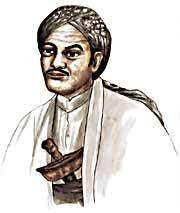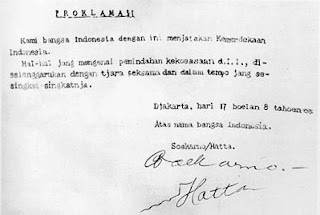Srivijaya was a ethnic Malay kingdom on Sumatra which influenced much of the Maritime Southeast Asia. From the 7th century CE, the powerful Srivijaya naval kingdom flourished as a result of trade and the influences of Hinduism and Buddhism that were imported with it.
As early as the first century CE Indonesian vessels made trade voyages as far as Africa. Picture: a ship carved on Borobudur, circa 800 CE.
Srivijaya was centred in the coastal trading centre of present day Palembang. Srivijaya was not a "state" in the modern sense with defined boundaries and a centralized government to which the citizens own allegiance. Rather Srivijaya was a confederacy form of society centered on a royal heartland. It was a thalassocracy and did not extend its influence far beyond the coastal areas of the islands of Southeast Asia. Trade was the driving force of Srivijaya just as it is for most societies throughout history. The Srivijayan navy controlled the trade that made its way through the Strait of Malacca.
By the 7th century, the harbors of various vassal states of Srivijaya lined both coasts of the Straits of Melaka.[16] Around this time, Srivijaya had established suzerainty over large areas of Sumatra, western Java, and much of the Malay Peninsula. Dominating the Malacca and Sunda straits, the empire controlled both the Spice Route traffic and local trade. It remained a formidable sea power until the 13th century. This spread the ethnic Malay culture throughout Sumatra, the Malay Peninsula, and western Borneo. A stronghold of Vajrayana Buddhism, Srivijaya attracted pilgrims and scholars from other parts of Asia.
A series of Chola raids in the 11th century weakened the Srivijayan hegemony and enabled the formation of regional kingdoms based, like Kediri, on intensive agriculture rather than coastal and long distance trade. Srivijayan influence waned by the 11th century. The island was in frequent conflict with the Javanese kingdoms, first Singhasari and then Majapahit. Islam eventually made its way to the Aceh region of Sumatra, spreading its influence through contacts with Arabs and Indian traders. By the late 13th century, the kingdom of Pasai in northern Sumatra converted to Islam. At that time Srivijaya was briefly a tributary of the Khmer empire and later the Sukhothai kingdom[citation needed]. The last inscription dates to 1374, where a crown prince, Ananggavarman, is mentioned. Srivijaya ceased to exist by 1414, when Parameswara, the kingdom's last prince, converted to Islam and founded the Sultanate of Malacca on the Malay peninsula.




























